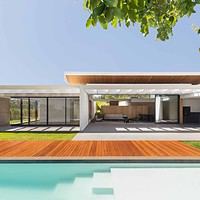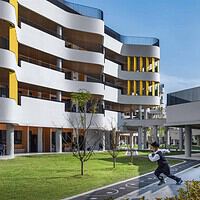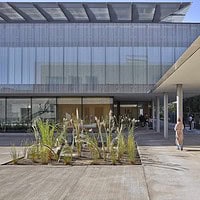Aluminum may not immediately spring to mind as a transformative material in design, yet its properties of versatility and eco-friendliness position it as a key player in today’s design landscape. Its evolution from a mainly industrial use to a pivotal role in modern aesthetic spaces, including sliding doors, spans homes to offices, showcasing its broad potential.
Aluminum’s Role in Elevating Home Aesthetics
The integration of aluminum into home decor has been subtle yet impactful, offering a sleek and modern look that complements various design themes. In particular, sliding door systems crafted from aluminum blend functionality with style, enhancing the spatial quality of rooms with their smooth operation and long-lasting nature. This adaptability allows for personalized design solutions, fitting any style from the minimalist to the more vibrant and eclectic. Furniture and fixtures also benefit from aluminum, gaining in both elegance and durability, a testament to aluminum’s ability to elevate interior design with its lightweight and resilient features.
Green Architecture and Aluminum
With a growing emphasis on sustainability, the architectural sector has turned to aluminum for its environmentally friendly features. Employing aluminum in the construction of energy-efficient buildings, notably in facades, windows and doors, has shown a reduction in energy use while also improving the visual appeal of buildings. A critical advantage of aluminum is its recyclability, supporting the urgent need for materials that contribute to a more sustainable, circular economy. This recyclable nature, coupled with its design flexibility, allows architects to pursue both eco-conscious and aesthetically ambitious projects, leading to buildings that stand out for their sustainability and design excellence.
Transforming Office Spaces with Aluminum
Reflecting the dynamic shifts in today’s work culture, aluminum has become a foundational element in crafting modern office designs. Its strength, combined with a lighter weight, makes it ideal for producing office furnishings that are both appealing and practical. Aluminum facilitates the design of versatile workspaces, from desks to partitions, promoting a sense of openness and encouraging a collaborative atmosphere. It also plays a crucial role in enhancing natural light within office settings, contributing positively to workplace well-being. Aluminum thus stands out for offering design solutions that are innovative, sustainable and aligned with the needs of contemporary office spaces.
In wrapping up, the influence of aluminum in reshaping contemporary design is unmistakable. From its ability to transform the aesthetics of homes and offices to its integral role in sustainable architectural practices, aluminum presents a multitude of advantages. As the design community continues to seek sustainable yet aesthetically pleasing materials, aluminum is poised to remain a central material in the design and architectural industries, reflecting both current trends and future directions.















